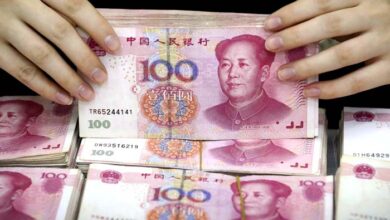The dollar goes up a little bit; the focus is on retail sales and Michigan sentiment data.

In early trading in Europe on Friday, the U.S. dollar went up a little bit, but it was still below its recent 20-year high because people no longer thought that interest rates would go up a lot in July.
At 3 AM ET (0700 GMT), the Dollar Index, which compares the dollar to a basket of six other currencies, was up 0.1% to 108.528. On Thursday, it reached 109.290, which was its highest level since September 2002.
The release of consumer price data on Wednesday, which showed inflation racing at the fastest rate in four decades, raised expectations that the Federal Reserve would go for a super-sized tightening of at least 100 basis points at its July meeting, boosting the dollar significantly.
But these expectations have changed since Fed Governor Christopher Waller and St. Louis Fed President James Bullard, both of whom are known as “hawks,” said they favoured another 75 bps hike this month, which would be the same as the increase in June.
Later on Friday, the U.S. retail sales for June will be released. They are expected to have gone up 0.8% from May, while the Michigan consumer sentiment index for July could show a less optimistic picture.
EUR/USD traded flat at 1.0016, holding above parity despite the widely respected Mario Draghi offering his resignation as Prime Minister of Italy in the wake of losing the support of one of the country’s largest political parties from his broad coalition government.
This political chaos makes an already bad macro picture even worse, as the European Commission showed on Thursday when it cut its GDP forecast for 2023 from 2.3% to 1.4%.
In a note, analysts at ING said, “Another try to break below 1.0000 seems likely in the coming sessions, and this time we could see a more decisive move down.” “We still think that 0.9800 to 0.9900 could be a short-term bottom for the EUR/USD.”
The USD/JPY fell 1% to 138.79. It reached 139.38 overnight for the first time since September 1998, when the Fed and the Bank of Japan had different monetary policies. This put a lot of pressure on the Japanese currency.
The pair is getting very close to the psychologically important 140 level, which it hasn’t been at since 1998. This could cause officials to step in.
GBP/USD fell 0.1 percent to 1.1816 after falling to a 28-month low of 1.1761 overnight, putting the currency on track for its worst week since early May as political uncertainty casts a pall over the pound.
The USD/CAD went up 0.1% to 1.3127, and the greenback regained its balance after the Bank of Canada raised rates by 1% on Wednesday.
“We think that the Bank of Canada’s faster rate hikes could help the currency in the long run, but for now, external factors like global risk sentiment and oil prices continue to play a much bigger role and may keep CAD gains limited in the near term,” said ING.
Risk-sensitive The AUD/USD fell 0.3% to 0.6726, the NZD/USD remained unchanged at 0.6129, and the USD/CNY rose 0.1% to 6.7636. The yuan fell to its lowest level against the dollar in two months after China’s economy shrank sharply in the second quarter, with GDP falling 2.6% from the previous quarter.





